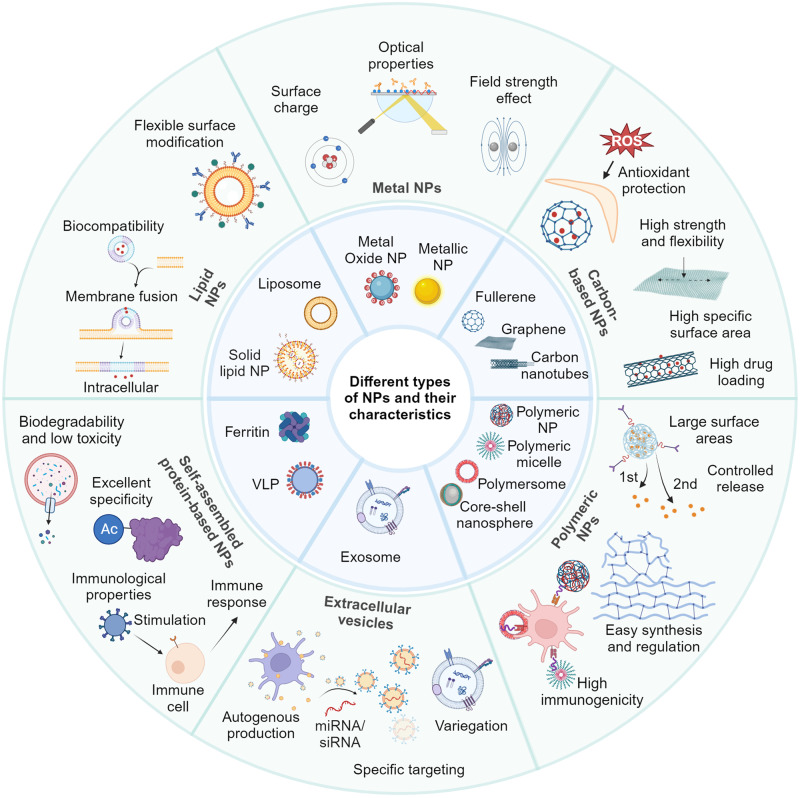Fig. 1.
Six common nanomaterials and their characteristics. Lipid NPs, composed of lipids such as phospholipids, exhibit good biocompatibility and flexible surface modification capabilities. Metal NPs, including metals (such as gold, silver, copper) and their metal oxides, possess excellent optical, electronic, and magnetic properties, enabling applications in biological imaging, PTT, and sensing.790 Carbon-based nanomaterials, including CNTs, graphene, and fullerenes, not only have a large surface area and high drug loading capacity but also exhibit high strength and chemical stability, allowing resistance to oxidative environments.791 Polymer NPs, composed of polymer materials, display diverse structures and properties.792 Self-assembled NPs, including ferritin family proteins and VLPs, possess good biodegradability in the case of the former and can mimic viral stimuli to initiate immune responses in the case of the latter.793 Exosomes, a type of small vesicles secreted by cells, carry abundant proteins, nucleic acids, and signaling molecules, playing vital roles in information transfer and regulation.794 These and exosomes have broad applications in the biomedical and nanotechnology fields, including drug delivery, molecular imaging, biosensing, tissue engineering, and disease diagnosis

